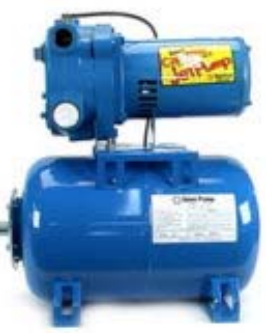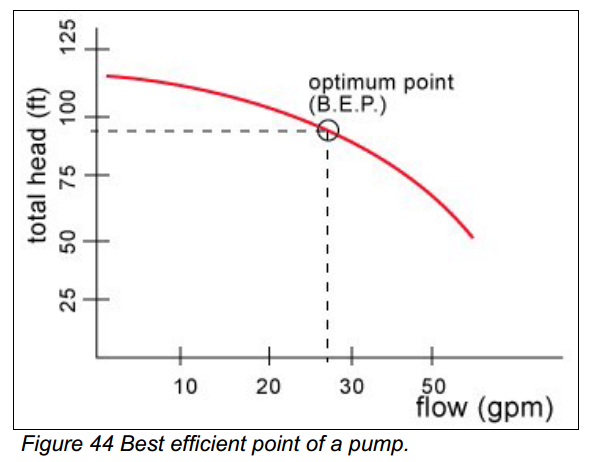| 1. |

According to the above picture, what kind of centrifugal pump is this. (Refer of page-7)
|
|
|
Typical Jet Pump |
|
|
Hydraulic-Cyclic Pump |
| 2. |
What are three important characteristics of pump systems? |
|
|
Pressure, Friction and Flow |
|
|
Temperature, Volume and Surface Area |
| 3. |
Pressure is the driving force responsible for the movement of the fluid. Friction is the force that slows down fluid particles. ________ is the amount of volume that is displaced per unit time. |
|
|
Viscosity |
|
|
Flow Rate |
| 4. |
Another cause of friction is the interaction of the fluid with the pipe wall, the ________ the pipe, the_________ the friction. |
|
|
rougher; lower |
|
|
rougher, higher |
| 5. |
In household systems, friction can be a greater proportion of the pump energy output, maybe up to _____of the total, this is because small pipes produce higher friction than larger pipes for the same average fluid velocity in the pipe. (Refer to page-14) |
|
|
50% |
|
|
35% |
| 6. |
Any time you have liquid in a container, even one that is not pressurized, you will have pressure at the bottom due to the liquid’s weight, this is known as static pressure. |
|
|
True |
|
|
False |
| 7. |
__________ is the height that the liquid is raised to at the discharge side of the pump less the height that the liquid is raised to at the suction side. |
|
|
Total Head |
|
|
Friction Head |
| 8. |
________head is the amount of energy loss due to friction caused by fluid movement through pipes and fittings. |
|
|
Static |
|
|
Friction |
| 9. |
 According to the above picture, the manufacturer will rate the pump at its optimum total head and flow, this point is also known as the best efficiency point or B.E.P. At that flow rate, the pump is at its most efficient and there will be minimal amount of vibration and noise. Of course, the pump can operate at other flow rates, higher or lower than the rating but the life of the pump will suffer if you operate too far away from its normal rating. As a guideline, aim for a variation of plus or minus ______ on total head. According to the above picture, the manufacturer will rate the pump at its optimum total head and flow, this point is also known as the best efficiency point or B.E.P. At that flow rate, the pump is at its most efficient and there will be minimal amount of vibration and noise. Of course, the pump can operate at other flow rates, higher or lower than the rating but the life of the pump will suffer if you operate too far away from its normal rating. As a guideline, aim for a variation of plus or minus ______ on total head.
|
|
|
50% |
|
|
15% |
| 10. |
One must be careful where you locate the pressure gauge, if it is much higher than the pump suction, say higher than 2 feet, you will read less pressure than actually is there at the pump. Also the difference in velocity head of the pump discharge vs. the suction should be accounted for but this is typically small. |
|
|
True |
|
|
False |
|